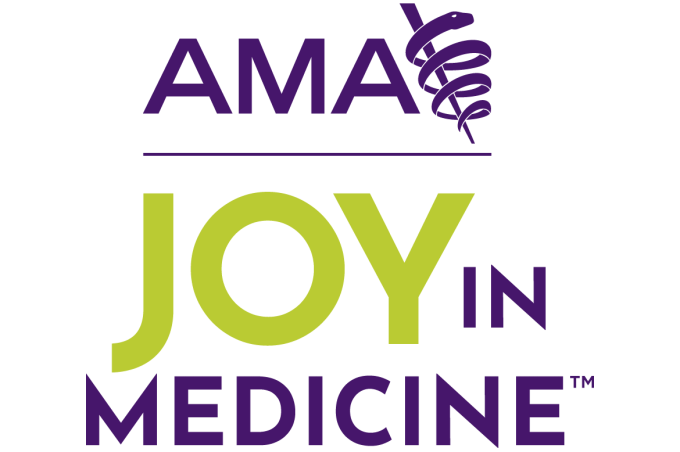As a medical student, do you ever wonder what it’s like to specialize in anesthesiology? Meet Rachel Clement, MD, an anesthesiologist and a featured physician in the AMA’s “Shadow Me” Specialty Series, which offers advice directly from physicians about life in their specialties. Check out her insights to help determine whether a career in anesthesiology might be a good fit for you.
The AMA’s Specialty Guide simplifies medical students’ specialty selection process, highlight major specialties, detail training information, and provide access to related association information. It is produced by FREIDA™, the AMA Residency & Fellowship Database®.
Learn more with the AMA about the medical specialty of anesthesiology.
“Shadowing” Dr. Clement
Specialty: Anesthesiology.
Practice setting: Hospital.
Employment type: Employed by a multispecialty medical group, Wenatchee Valley Medical Group, within Confluence Health, which is a member of the AMA Health System Program. The program provides enterprise solutions to equip leadership, physicians and care teams with resources to help drive the future of medicine.
Years in practice: Six.
A typical day and week in my practice: I am usually at the hospital by 6:45 a.m. That is probably the most consistent thing about my day. After that, the day inevitably deviates from the expected schedule.
In my group, we have only one certified registered nurse anesthetist and therefore mostly sit our own cases and do very little supervising. We work until the cases are done, and this includes add-on surgeries, labor epidurals and C-sections, and nonoperating room anesthesia cases. My hours per week vary depending on if I am on call and how busy our operating rooms are. Some days I will be able to leave at 3 p.m., but other days I won’t leave until the following morning.
Another way that I think about it is how many nights a week I make it home for dinner, which is usually two to three. I work about one weekend a month and am on call several times throughout a month.
In addition to my clinical work, I have administrative responsibilities that total 15–20 hours per month. I am also involved in education, including teaching medical students, nurses and other departmental staff and physicians. All these roles are part of my “day job.” Also, I am involved in organized medicine and serve on the boards of the Washington State Society of Anesthesiologists and the Washington State Medical Association.
The most challenging and rewarding aspects of anesthesiology: We are often taking care of patients who we know very little about and who are in highly stressful and sometimes life-threatening situations. We have only minutes to learn their medical history and earn the patients’ and family members’ trust before going to the operating room. This means that we are navigating both high-risk medical conditions and social dynamics, coming up with safe and patient-centered anesthetic plans, and doing so with very little time.
This work is highly gratifying, and we are well trained and comfortable with this pace. However, it becomes challenging when we have unanticipated and unwanted outcomes for patients, though the great thing about this job is we get to work with the patients to see them through safely and support them along the way.
The most rewarding part of my job is twofold. For starters, I love working with patients to come up with anesthetic plans that address all their concerns: pain, nausea, awareness, postoperative cognitive decline, safety, etc. Listening to their worries and being able to reassure them is powerful and speaks to our expertise in pharmacology and physiology.
In addition, I love being able to step back from the one-physician, one-patient dynamic and work with surgeons and staff to improve care for all our patients. I have the privilege of working with all our surgeons and learning with them how we can improve care. I love the collaboration and believe that the siloed practice of anesthesiology is a thing of the past.
The impact burnout has on anesthesiology: The short answer is that we are having trouble recruiting and hiring, and there is a downward trend in morale. Within our group, we are very close, supporting each other through work and life events. Even with this supportive culture, our anesthesiologists are struggling as we are asked to do more, work more, lead more, serve more—all without more time to do these things.
How Confluence Health is reducing physician burnout: We have an absolutely incredible system in place that was started by Dr. Makrina Shanbour, a hospitalist, and is supported by our multispecialty physician group, Wenatchee Valley Medical Group, as well as our hospital system, Confluence Health. Dr. Shanbour has led this effort to support physicians and nonphysician providers in our organization, creating different avenues of support and engagement.
Part of the success of her work comes from a multipronged approach to combat burnout. Dr. Shanbour and her team conduct departmental surveys and outreach, highlight individuals who are making a difference, organize fun events for physician and nonphysician families, improve practice efficiency for providers and have a confidential system in place to support physicians and nonphysician providers struggling with personal or professional issues.
They use data and close communication with departments to learn what people need to work effectively, improve engagement and mitigate the effects of burnout. This work has been so successful and far-reaching across the organization that Dr. Shanbour and Confluence Health earned silver recognition from the AMA Joy in Medicine™ Health System Recognition Program.
How my lifestyle matches, or differs from, what I had envisioned: I was fortunate to have a pretty good idea of the lifestyle of an anesthesiologist because my father was one. He practiced for eight years as an internist, and after that he was ready to leave medicine. My mother, also an internist, encouraged him to switch specialties instead. He completed his anesthesiology residency at Mass General Hospital in Boston and, for the next 20 years, was the happiest physician I’ve seen.
Because of him, I also had a front-row seat to the more stressful aspects of the profession: call, challenging cases and unpredictable schedules. With that early exposure, I haven’t been shocked by these things in my own work. However, observing it is different from living it, and there have been some surprises. The gratification of taking care of patients is greater than I had imagined.
Similarly, working with other physicians to improve care through collaborative efforts and systems changes has been more fulfilling and fun than I ever thought possible. I also was not prepared for the impact the stress and sleep deprivation would play on my ability to be a good wife, mother, and friend. The toll residency training takes on every aspect of a person’s life is also profound.
It is an absolute joy to be immersed in the area of medicine that you love. However, it can take years to recover from the stress, sleeplessness and lack of control over your own life during residency. I had my first child at the end of medical school and my second during my second year of residency. I had to pump in bathroom stalls, I missed most bedtimes and weekends, and when I was home, I was either studying or working on projects. Reflecting on that time, I was not a great wife or parent during training or even the couple of years after. Fortunately, my husband is not only an incredible father but also a patient, kind, loving and committed partner.
Another surprise is how diverse the job market is. There are so many different kinds of practices. When looking for a job after training, think about how the job complements your career and life goals. Think about if you want to supervise certified registered nurse anesthetists and anesthesiologist assistants or do your own cases, if you want to be a generalist or specialize, and if you want nonclinical time for projects or leadership roles.
Skills every physician in training should have for anesthesiology but won’t be tested for on the board exam: Vigilance, flexibility and remaining calm in stressful situations. You have to continue to be curious and enjoy learning after residency and fellowship. If you ever start to say, “because that’s the way I have always done it,” stop yourself and do a literature review on the topic or discuss with colleagues what they do in that particular situation. If I am practicing anesthesiology at the end of my career the same way I did during residency, I will be doing something wrong.
One question physicians in training should ask themselves before pursuing anesthesiology: How do I handle uncertainty? If you can handle the unexpected well, whether that is a surgical hemorrhage or emergent cases at 2 a.m. or your daily schedule being unpredictable, then that flexibility will make the job exciting and something you can do forever. If you need more control, then you may find the surprises that you encounter as an anesthesiologist are exhausting and unsustainable.
Books, podcasts or other resources every medical student interested in anesthesiology should be reading: I would recommend doing mini literature reviews on topics that interest you and finding journal articles that help evolve your practice. For additional reading, I recommend:
Think Again: The Power of Knowing What You Don't Know, by Adam Grant, MS, PhD. It emphasizes a growth mindset and how important it is to approach each situation from multiple different perspectives. Within anesthesiology, we are compulsive and are certain that our way is the best way, even though we all do things a little differently. Remaining curious rather than rigid not only allows us to learn more, but also creates a culture around you of innovation, improvement and collaboration.
Never Enough: When Achievement Culture Becomes Toxic—and What We Can Do About It, by Jennifer Breheny Wallace. I wish I had been able to read this in residency. We work so hard before, during and after training, and the pursuit for perfection, do no harm and achievement does not end. The expectations we have of ourselves can translate into expectations we have of our kids and our partners, even when we don’t intend them to.
The third book should be anything you want to read for fun. I just finished Lady Tan’s Circle of Women: A Novel, by Lisa See, about 16th-century Chinese medicine, gender roles and family. I spent years not reading anything other than textbooks while in training and have had to relearn how to read for fun. I now read or listen to two to three books at a time. I love the feeling of craving a book.
Additional advice I would give to students who are considering anesthesiology: Anesthesiology is a perfect blend of critical thinking, procedural skills, collaboration, variety and patient-centered medicine. There are several fellowships that can expand your scope in critical care, cardiac anesthesiology, pediatric anesthesiology, pain medicine and more. Our job is really to keep patients safe, and we need more people to take on this incredible work. If you are interested in this field, find a mentor, talk to your program director and do some rotations.
Finally, there are many ways to be involved outside of the operating room. Anesthesiology lends itself to leadership positions in hospitals because we interact with so many specialties and departments. Organized medicine at the state or national level is another way to understand and advocate on the issues directly affecting anesthesiology, and the work is incredibly rewarding.




